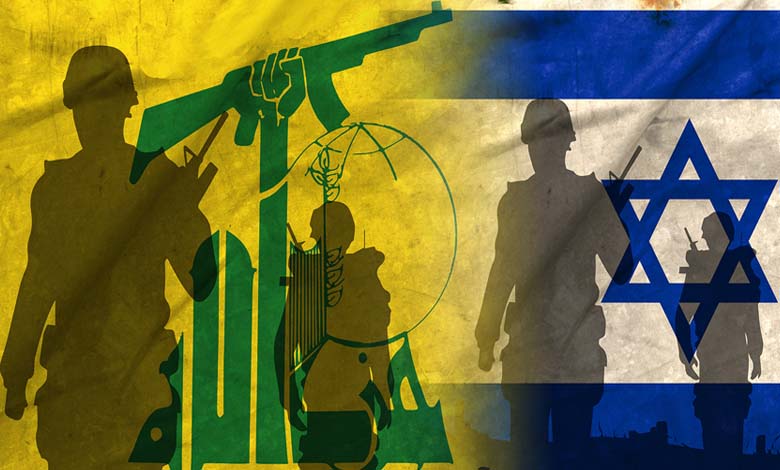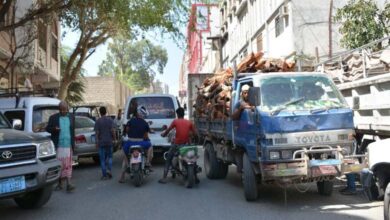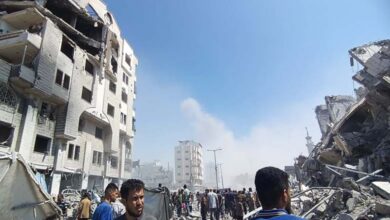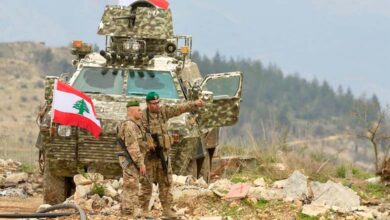Hezbollah Bets on Tunnel Warfare in Confrontation with Israel
An expert on Hezbollah affairs confirms that the tunnel network is used for storing ammunition and as hidden platforms for launching rockets.

A video recently released by Hezbollah shows a model of a tunnel network including rocket launch platforms and heavy weapons. Experts believe these facilities could play a key role in any confrontation with Israel.
-
Can Israel Deter Hezbollah? Dark Scenarios for a Potential Confrontation
-
New U.S. Sanctions Targeting Yemeni Houthis and Lebanese Hezbollah
Since October 8, the day after the start of the war in the Gaza Strip following an unprecedented Hamas attack on southern Israel, Hezbollah, supported by Iran, has been exchanging fire with Israel daily across the Lebanese border.
Fears of a major conflict have increased after Lebanese resistance and Tehran threatened retaliation for the killing of Hezbollah leader Fouad Shukr in an Israeli strike in southern Beirut, and Hamas political bureau chief Ismail Haniyeh in a strike in Tehran attributed to Israel.
-
Crisis Between Defense Minister and Army Chief Amid Heightened Tensions Between Hezbollah and Israel
-
12 Hours of Chaos in Israel “Saved” Hezbollah from a Potential Strike
The video, titled “Our Mountains Are Our Treasures”, lasts four minutes and features sound and light effects. It shows a facility named “Imad 4”, fortified, with military-clad personnel, vehicles loaded with rockets, and motorcycles in large, illuminated tunnels.
Digital forensic expert at the University of California, Hany Farid, responded to an AFP inquiry saying it is “unlikely that the video was created with artificial intelligence technology,” although some parts showing trucks and motorcycles moving in the tunnel seem to have a slight electronic-generated graphics imprint, without being able to confirm it.
Nicholas Blanford, a Hezbollah expert at the Atlantic Council, states that Hezbollah‘s tunnel network is used for “storing ammunition and as hidden platforms for launching rockets.” He suggests that the video could be a “warning message” to Israel in case Hezbollah carries out its threat of “revenge” for Shukr, which might provoke a violent Israeli response.
Blanford adds that Hezbollah wants to convey to Tel Aviv that it is capable of “using much more powerful weapons” than those used in the past ten months.
-
Hezbollah Conceals Its Losses with Promotional Displays of the ‘Hudhud’ Drone
-
Know Hezbollah’s “Primitive” Tactics in Confronting Israeli Technology
Retired Lebanese Army Brigadier General Munir Shihadeh explains that the video shows “the depth, extent, and complexity of the tunnels, and how difficult it is for Israel to reach them.”
Retired Brigadier General Hisham Jaber says there is limited information about these “highly secret” facilities, adding that the “Imad 4” facility could be one of many. He explains that “the nature of the terrain in southern Lebanon, with its mountains and hills, is ideal for excavation and is protected as it is in the heart of the mountain.” He adds that “aircraft cannot reach these protected facilities from above” and fighters can remain inside “between nine months and a year because they are equipped with all necessary resources such as energy, food, and medicine,” further stating that “Israel could continue bombing for months and continue to destroy Lebanon without reaching them.”
Hezbollah affairs expert at the Israeli Institute for National Security Studies, Orna Mizrahi, in response to an AFP inquiry in Jerusalem, says, “We have known about Hezbollah‘s tunnels for some time,” adding that the Israeli army has “gained good experience” with tunnels from the Gaza Strip conflict where Hamas has an extensive network, and will have to deal with them if Lebanon is involved again.
It is also known that there are underground military facilities in Iran, which supports Hezbollah financially and militarily.
-
Dangerous Escalation: Hezbollah Targets Israeli Fighter Jets for the First Time Since the War Began
-
Hezbollah Faces Internal Dissent and Divisions
Following Hezbollah‘s video release, the Iranian embassy in Beirut wrote on its Arabic account on the “X” platform that “in Persian, we call the missile facilities located underground and within rocks and mountains missile cities.” It added that they “exist throughout Iran and we can, if necessary, attack the enemy from any point” in Tehran.
The Iranian news agency “Mehr” reported that the clip reveals a “missile city under the Jabal Amel mountain range,” referring to southern Lebanon. Hezbollah‘s influence is particularly concentrated in southern Lebanon and in the Bekaa region to the east.
-
Forest Fires in Israel: What is Hezbollah’s Involvement and What are the Consequences?
-
Is Hezbollah Planning to Return to Syria and Why?
The Lebanese resistance began working on its tunnel network since the mid-1980s, when Israel occupied parts of southern Lebanon, according to Blanford.
In 2010, Hezbollah opened what it called the “first jihadist tourist site about resistance” in Mellita, southern Lebanon, consisting of a 200-meter tunnel. The party stated at the time that the place had served as a military base during the 2006 war with Israel and during clashes with the Israeli army before its withdrawal from southern Lebanon in 2000.
-
Secretive: Is Iran Training Hezbollah in Qom, Iran and Why?
-
Hezbollah Strikes Golan Brigade Headquarters with Large Rocket Barrage
The party exhibited in the “Mellita tourist site” dozens of anti-tank shells, Katyusha rockets, and other rockets and launchers, as well as spoils from the Israeli army, including “Merkava” tanks.
Blanford notes that the tunnels built in the early 2000s, similar to the Mellita site, were “designed for a small number of fighters to rest, eat, and sleep in,” but the facility shown in the video is “much larger than those shelters.”
Political science professor at the University of Grenoble, Daniel Meyer, indicates that Hezbollah‘s use of tunnels became apparent during its war with Israel in 2006. He notes that Hezbollah fighters moved “underground” against Israel, which had air superiority. After the 2006 war, Hezbollah developed its tunnels, according to experts.
Tel Aviv announced in 2019 that it had discovered and destroyed Hezbollah tunnels dug from Lebanon into Israeli territory. Meyer believes that the tunnel network is not as extensive as Hamas‘s network in the Gaza Strip, but that “the possibility of the enemy coming out of the ground remains undoubtedly present in the Israeli mind.”












